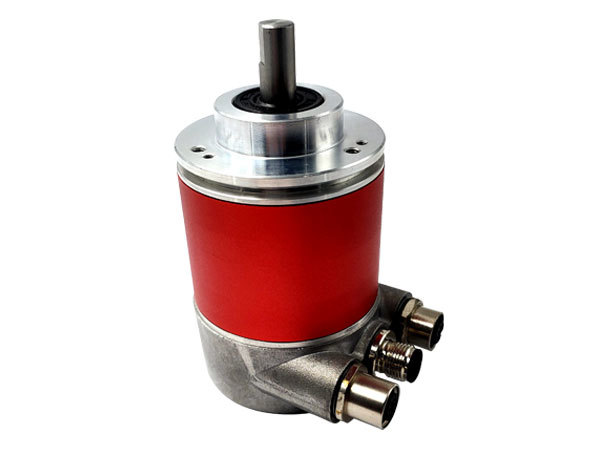How can I use an industrial Ethernet encoder to measure speed accurately?
Date de sortie:
2021-04-26 00:00
How can I use an Industrial Ethernet encoder to measure speed accurately? When using encoders, measuring angle or linear distance is an important aspect, but they can also be used to measure speed or linear velocity. As the Industrial Ethernet encoder rotates faster, the pulse frequency increases at the same rate.
The encoder's measurement speed can be determined by two methods: pulse counting or pulse synchronization.
Incremental encoders generally emit signals on two channels - usually called "A" and "B", and the two channels are offset by 90 degrees. The direction of rotation can be determined by the preceding channel. In general, channel a is leading and the direction of rotation is clockwise, and channel b is leading and the direction of rotation is clockwise. Quadrature output also makes it possible to improve encoder resolution using X2 or X4 decoding techniques. With X2 decoding, the rising and falling edges of channel a are counted, and the number of pulses counted per revolution is doubled, thus doubling the encoder's resolution. With X4 decoding, the rising and falling edges of channels a and b are counted along the river, multiplying resolution by four.
Industrial Ethernet encoder speed measurement can be affected by a variety of equipment errors, including instrument errors, phase errors and interpolation errors.
Instrument errors include encoder mechanical failure and encoder or reticle scaling error. Instrument-related errors include substrate flatness, sensor positioning accuracy and concentricity consistency of encoder and motor shaft.
Phase error is caused by the loss of information transmission between pulses or readings. The quadrature encoder reads the signal edges on only one or two channels (A and B) and does not transmit any information between these readings. The phase error is only half the fixed measurement step or number of measurements.
It is only when the encoder resolution exceeds the X4 electronic decoding level inherent in the quadrature encoder that interpolation errors occur. Interpolation error increases with encoder speed. Using an encoder with more lines or more windows reduces interpolation and phase errors.
Weihai Adike Electronic Technology Co, Ltd. offers a variety of encoders with high resolution, customized precision and a high level of protection. Please do not hesitate to contact us for the purchase of encoder products.

Autres nouvelles
Récemment, le Bureau des sciences et technologies de Weihai a officiellement rendu publics les résultats de l'évaluation d'acceptation des laboratoires clés municipaux pour l'année 2025. Après une analyse rigoureuse des documents, une inspection sur place et une évaluation par des experts, le « Laboratoire clé de Weihai pour la recherche et le développement des codeurs rotatifs industriels » de notre entreprise s'est distingué et a obtenu la note maximale — « Excellent » ! Cette reconnaissance prestigieuse constitue non seulement une validation des accomplissements du laboratoire au cours des trois dernières années, mais aussi une certification autorisée du système global d'innovation et de la force intérieure de notre entreprise.
Présenter la différence entre le bus Canopen et le codeur absolu Canopen
Le réseau de contrôleurs est l'un des bus de champ ouvert les plus utilisés dans le monde. En tant que méthode de contrôle de communication de réseau à distance dotée d'une technologie avancée, d'une grande fiabilité, de fonctions complètes et d'un coût raisonnable, le bus CAN a été largement utilisé dans divers systèmes de contrôle d'automatisation.
Par exemple, les encodeurs à l'intérieur des imprimantes et des machines à cartes magnétiques ont une structure simple, et de nombreuses coques ne sont pas disponibles.
A quels problèmes faut-il faire attention lors de l'utilisation d'un codeur absolu CANopen ? Le codeur absolu CANopen est un dispositif qui convertit les changements de quantités physiques angulaires mécaniques en signaux électriques.
How can I use an industrial Ethernet encoder to measure speed accurately?
How can I use an Industrial Ethernet encoder to measure speed accurately? When using encoders, measuring angle or linear distance is an important aspect, but they can also be used to measure speed or linear velocity. As the Industrial Ethernet encoder rotates faster, the pulse frequency increases at the same rate.


